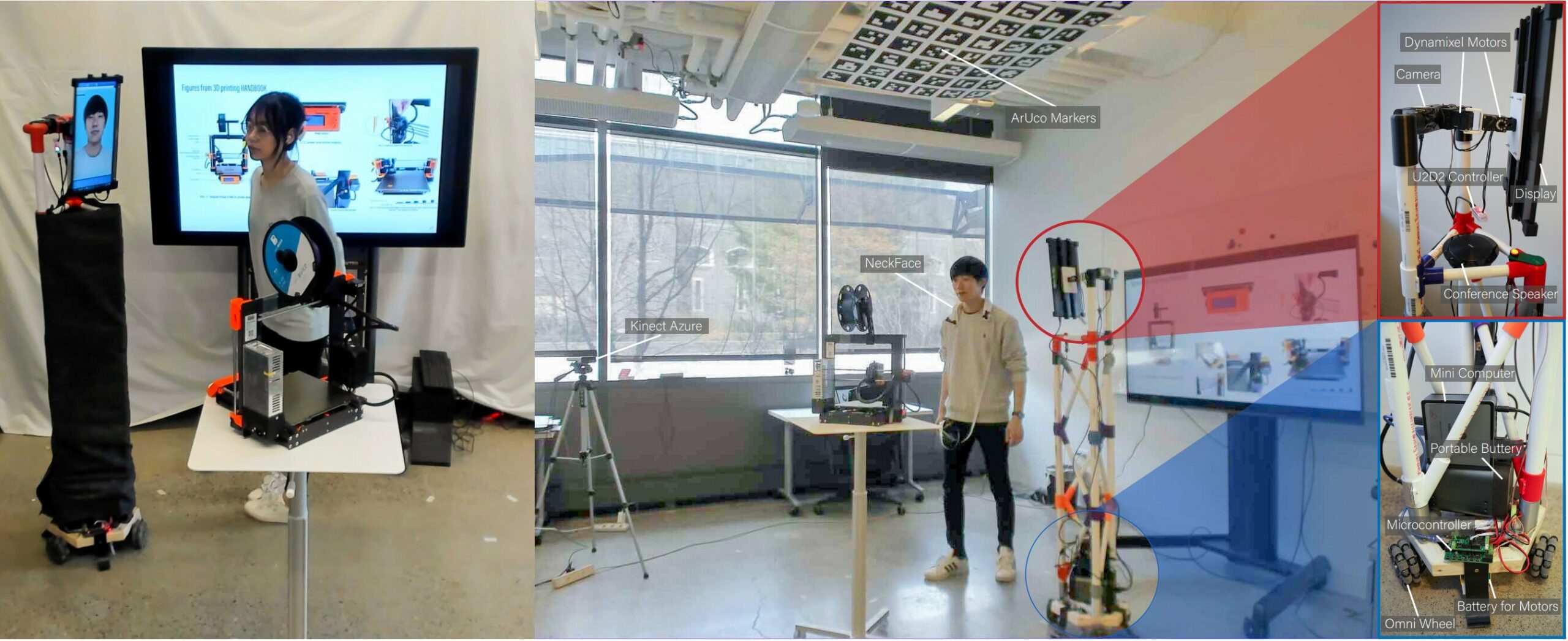

Cornell University researchers have developed a robot called ReMotion that can replicate a remote user’s movements in real-time, creating an automatic embodiment of the user’s physical space. This technology can convey key body language that is lost in standard virtual environments and allow for better, more dynamic interactions between remote collaborators.
The robot stands at nearly six feet tall and features omnidirectional wheels for feet, a monitor for a head, and game-engine software for brains. The device automatically mirrors the remote user’s movements using NeckFace, another Cornell-made device that tracks head and body movements. The motion data is sent remotely to the ReMotion robot in real-time, allowing it to replicate the user’s movements and physical space.
In a small study, participants reported feeling more connected to their remote teammates when using ReMotion compared to an existing telerobotic system. Participants also reported significantly higher shared attention among remote collaborators. Unlike other telepresence robots, ReMotion does not require manual steering, which can be distracting and take away from the task at hand. Additionally, virtual reality and mixed reality collaboration can require an active role from the user, and headsets may limit peripheral awareness.
Future Developments for ReMotion
Currently, ReMotion only works with two users in a one-on-one remote environment, and each user must occupy physical spaces of identical size and layout. However, ReMotion developers intend to explore asymmetrical scenarios, such as a single remote team member collaborating virtually via ReMotion with multiple teammates in a larger room. With further development, ReMotion could be deployed in virtual collaborative environments, classrooms, and other educational settings.
Cells form the foundation of all living organisms, and gaining insights into their inner workings…
Mosquitoes are not just an irritating nuisance; they are deadly vectors that transmit a range…
In the quest for sustainable living, consumers often hold fast to the belief that glass…
For over a century, the astral mystery surrounding Barnard's Star, a unique red dwarf just…
In the realm of catalysis, particularly in the context of oxygen evolution reactions (OER), understanding…
Recent research has illuminated a groundbreaking connection between blood donation frequency and the health of…
This website uses cookies.